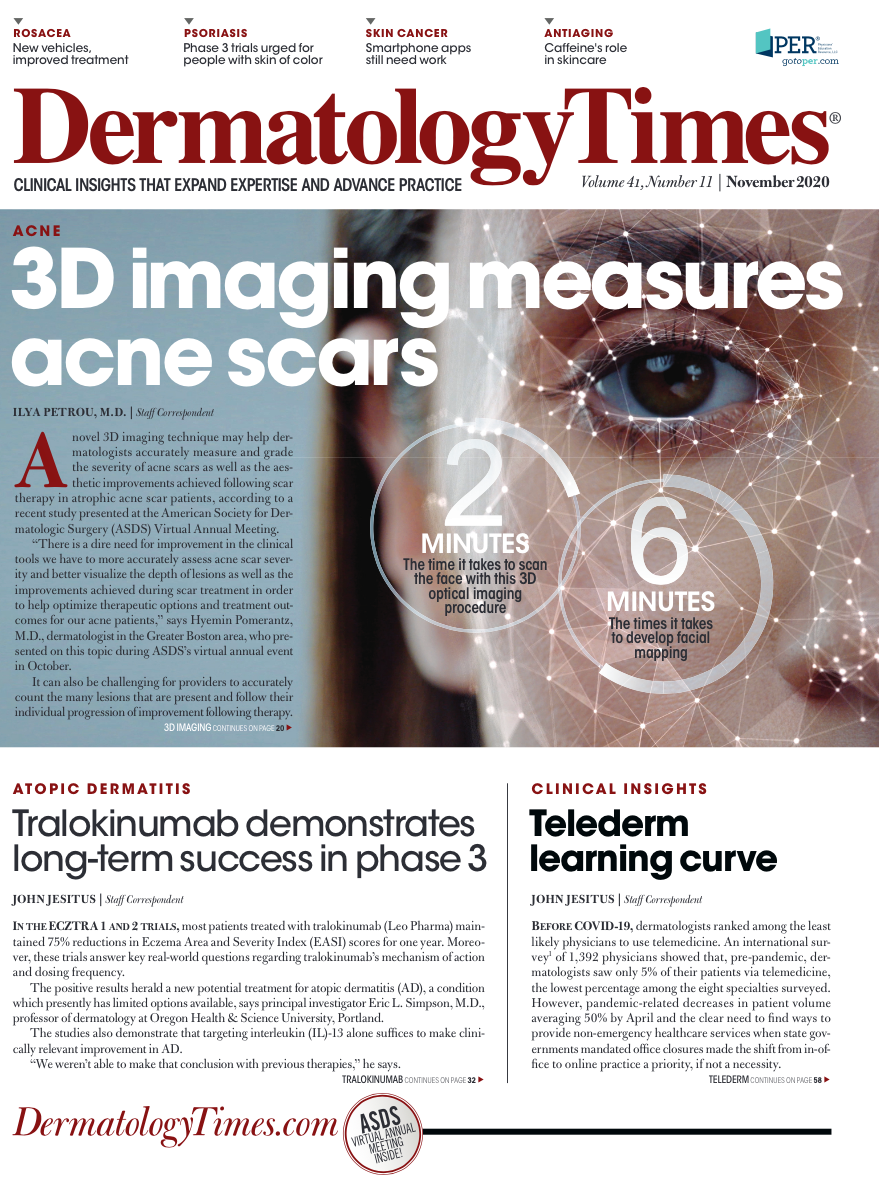- Case-Based Roundtable
- General Dermatology
- Eczema
- Chronic Hand Eczema
- Alopecia
- Aesthetics
- Vitiligo
- COVID-19
- Actinic Keratosis
- Precision Medicine and Biologics
- Rare Disease
- Wound Care
- Rosacea
- Psoriasis
- Psoriatic Arthritis
- Atopic Dermatitis
- Melasma
- NP and PA
- Skin Cancer
- Hidradenitis Suppurativa
- Drug Watch
- Pigmentary Disorders
- Acne
- Pediatric Dermatology
- Practice Management
- Prurigo Nodularis
- Buy-and-Bill
Publication
Article
Dermatology Times
Robotic-controlled laser advances body contouring
Author(s):
A novel robotic-controlled 1064-nm laser brings efficiency and precision to body contouring. The clinical trial supporting FDA clearance of the device showed its effectiveness based on blinded photographic assessments, ultrasound measurements and circumferential assessments.
The new 1064-nm laser for non-contact body contouring introduces robotics into aesthetic surgery and brings advantages for increased efficiency and precision, said Jill Waibel, MD, at the virtual annual meeting of the American Society for Dermatologic Surgery.
Dr. Waibel described the technology (eon FR, Dominion Aesthetic Technologies) and presented the results from the clinical trial that supported U.S. Food and Drug Administration clearance of the device.
“This novel system delivers the laser energy with a precision-controlled, motorized, articulated arm and is the first of its design to treat abdominal adiposity,” said Dr. Waibel, medical director and owner, Miami Dermatology and Laser Institute, Miami, Fla.
“It offers easy application and the ability to treat the entire abdomen in just 1 hour. Patients have no postprocedural downtime, and in early experience their satisfaction has been high. Considering these features, I believe this new device provides a promising solution to current barriers in noninvasive body contouring treatment.”
SOPHISTICATED TECHNOLOGY
The robotic arm on the laser was inspired by the remote-controlled mechanical arm found on the Space Shuttle (Canadarm). Because of its repeatable, accurate motion, the treatment head is maintained at a uniform distance from the skin and traverses the abdomen at a constant speed. The device also incorporates an innovative and patent pending proprietary jet impingement cooling system.
“We know that treatment with the 1064-nm wavelength is effective for lipolysis, but with manually operated devices there is no way to control whether the energy is delivered long enough or too long, which can cause excessive or suboptimal heating,” Dr. Waibel said.
“This system reduces human error and delivers energy that effectively activates apoptosis while minimizing patient discomfort.”
CLINICAL TRIAL RESULTS
Dr. Waibel was one of three investigators participating in the premarketing study that evaluated the laser. Eligible patients had a body mass index ≤30 kg/m2 and ≥25 mm thickness of adipose tissue on the abdomen.
A total of 36 patients were enrolled. They ranged in age from 18 to 70 years and had Fitzpatrick skin types I-V. Each patient was treated at a single session on the lower abdomen in a designated 150 cm2 on each side.
The primary outcome was based on a blinded evaluation of fat reduction judged on clinical photographs by three independent raters at week 12 post-treatment. The results showed a preference for the week 12 appearance versus baseline for 94.4% of the image pairs. Consistent with those results, 95% of patients reported visible reduction in fat and overall improved appearance.
Secondary outcomes included ultrasound measurement of fat thickness, which showed a 21.6% reduction, and circumferential measurements, which showed a 3.40 mm reduction. “All patients had a >1 inch average reduction in circumference with a range of up to 4 inches,” Dr. Waibel reported.
Pain during the procedure was reported by 9 (25%) patients. Nodules, which Dr. Waibel noted are the result of an inflammatory response following fat necrosis and fairly common after lipolysis with any 1064-nm laser, developed in four patients (11.1%) and were self-limiting. No adverse events were reported at the 12-week follow-up visit.
PLATFORM REFINEMENTS
Dr. Waibel said that the device used in the premarketing trial was a prototype model. Refinements found in the commercially available system have resulted in increased efficacy and better patient comfort. The changes include an increase in the energy setting that as reported by Thomas Fiala, MD, in a postmarketing study, led to a 26.3% reduction in ultrasound-measured fat thickness.
In addition, the company addressed pain during the procedure by increasing cooling at the points where the robotic arm turns to change direction at the end of a pass.
“There is the potential for a ‘hot spot’ to develop when the treatment head turns a corner, and some patients reported pain in association with that phenomenon. However, their discomfort was generally mild, on the order of a 2 or 3 out of scale of 10,” said Dr. Waibel.
Disclosures:
Dr. Fiala and Suzanne Kilmer, MD, also participated as investigators in the premarketing study of the laser.
Dr. Waibel is on the advisory board for Dominion Aesthetic Technologies and an advisor, consultant, and/or clinical trial investigator for other aesthetic laser companies.






